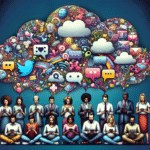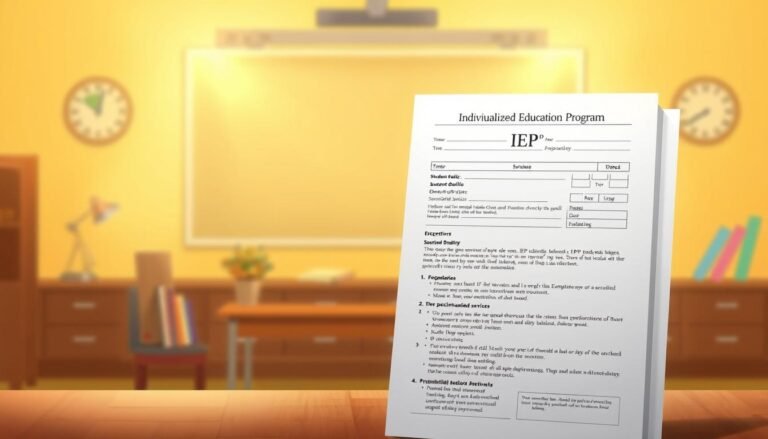
Learning Disabilities 101: Understanding the Spectrum of Challenges
Introduction
Navigating the world isn’t easy for everyone. For some, everyday tasks come with hurdles that most people might never even consider. Learning disabilities are more common than you might think, affecting millions around the globe. These conditions can significantly impact an individual’s academic and social experiences, and yet they remain misunderstood and often stigmatized. To empower those affected by learning disabilities, it is essential to shed light on the nuances of this subject. This article serves as Learning Disabilities 101: Understanding the Spectrum of Challenges, providing guidance, insights, and real-world applications to inspire understanding and support.
What Are Learning Disabilities?
Before we dive into the spectrum of challenges, it’s crucial to define what learning disabilities are. Learning disabilities are neurological disorders that affect how a person receives, processes, or expresses information. They can impact specific areas such as reading, writing, mathematics, and social interactions. Importantly, a learning disability is not indicative of a person’s intelligence, and many people with learning disabilities achieve great success.
Types of Learning Disabilities
There is a vast range of learning disabilities, each manifesting differently. Here’s a closer look:
| Type of Learning Disability | Description |
|---|---|
| Dyslexia | Difficulty in reading and interpreting words and letters |
| Dysgraphia | Challenges in writing, including spelling and handwriting issues |
| Dyscalculia | Difficulty understanding numbers and mathematical concepts |
| Nonverbal Learning Disabilities | Issues in nonverbal cues, such as body language and social skills |
| Auditory Processing Disorder | Difficulty processing sounds, impacting listening and comprehension |
Case Study: Rhonda’s Journey with Dyslexia
Rhonda, diagnosed with dyslexia in early childhood, struggled greatly with reading. Her early school experiences left her feeling isolated. Many teachers misconstrued her struggles as lack of effort. It wasn’t until a new teacher recognized Rhonda’s potential and introduced specialized reading programs that she began to flourish. This case highlights the importance of understanding individual learning disabilities, emphasizing that with the right support, students can achieve significant improvement.
The Spectrum of Challenges
Learning disabilities occur along a spectrum. Some individuals may face mild difficulties, while others may experience more severe and debilitating challenges. Let’s delve into various aspects of this spectrum.
Academic Challenges
Mild Challenges: Students may face slight difficulties but still perform adequately with some guidance. For instance, a child with mild dysgraphia might take longer to complete writing assignments but can effectively convey ideas with tools like voice-to-text software.
Moderate Challenges: In these cases, students need more specialized support. For example, a child with moderate dyscalculia may consistently struggle with basic math concepts. They may benefit from one-on-one instruction using manipulatives or visual aids.
Severe Challenges: Students encountering severe learning disabilities may require individualized education programs (IEPs). They may face profound difficulties across numerous subjects, and assistive technologies can be critical in providing support. A child with severe nonverbal learning disabilities might require social skills training along with academic help.
Emotional and Social Challenges
In addition to academic hurdles, learning disabilities can significantly impact emotional and social well-being. Many individuals might experience feelings of inadequacy, anxiety, or depression due to their struggles in an educational environment that does not cater to their needs.
Case Study: Mark’s Challenges with Nonverbal Learning Disability
Mark’s experience highlights social challenges associated with nonverbal learning disabilities. He often misinterpreted social cues, leading to awkward interactions with peers. By participating in therapy focused on social skills, he improved his ability to interpret body language and engage with friends more effectively, demonstrating the importance of targeted interventions for emotional well-being.
Strategies for Support
Understanding learning disabilities is pivotal for parents, educators, and peers. Here are proven strategies to provide effective support:
Early Identification
Early diagnosis can lead to better outcomes. Schools must be equipped to identify signs of learning disabilities and provide resources for early intervention. Regular assessments can be beneficial.
Individualized Instruction
Customized teaching strategies, like differentiated instruction, can address diverse learning needs. For instance, visual aids can be tremendously helpful for students with dyslexia, while hands-on activities might assist those with dyscalculia.
Use of Technology
Educational technology can facilitate learning. Tools such as text-to-speech software, speech recognition programs, and educational apps can bridge gaps in understanding and promote independence among learners.
Parent and Teacher Collaboration
A joint effort between parents and educators is vital. Keeping open lines of communication helps in forming a united front, allowing for the application of consistent strategies at home and in school.
Case Study: Sarah’s Growth with Parental Involvement
Sarah’s parents were proactive in her learning journey, attending meetings with teachers and advocating for her needs. They organized study sessions at home using engaging methods. With their collective support and communication with educators, Sarah excelled academically and socially, embodying the positive outcomes of parental involvement.
The Role of Society in Understanding Learning Disabilities
Awareness and acceptance play crucial roles in fostering an inclusive environment. By educating society about learning disabilities, we can reduce stigma and promote understanding, allowing individuals to thrive.
Advocacy and Resources
Organizations such as the Learning Disabilities Association of America (LDA) offer resources for families and educators. Furthermore, advocacy efforts can help shape policies that support students with learning disabilities, ensuring access to necessary resources and accommodations.
Community Programs
Communities can establish programs focused on integration and education about learning disabilities. Workshops, seminars, and peer support groups create spaces for discussion and learning to dispel myths and foster inclusion.
Conclusion
The journey toward understanding learning disabilities is ongoing, but the insights gained can profoundly affect individuals and society as a whole. By framing our approach with compassion and support, we can create an environment where everyone is encouraged to reach their potential.
As we continue to explore Learning Disabilities 101: Understanding the Spectrum of Challenges, remember that knowledge is not just power; it’s the key to breaking down barriers and fostering an inclusive society. Let us take actionable steps to nurture understanding, provide appropriate resources, and champion every learner’s journey.
FAQs
1. What are some signs that a child may have a learning disability?
Some signs include difficulties in reading, writing, or math, trouble following instructions, and showing frustration or low self-esteem related to academic tasks.
2. Can adults have learning disabilities?
Yes, learning disabilities can persist into adulthood. Many adults realize they have a learning disability after encountering challenges in educational or workplace settings.
3. How are learning disabilities diagnosed?
They are typically diagnosed through comprehensive evaluations by qualified professionals, including psychologists, educational specialists, or neurologists.
4. What support is available for individuals with learning disabilities?
Various supports include specialized teaching methods, tutoring, assistive technology, and therapy focused on social and emotional skills.
5. Are learning disabilities genetic?
Research indicates a genetic component to learning disabilities. They can run in families, but environmental factors and educational experiences are significant contributors as well.
6. How can I advocate for someone with a learning disability?
Understanding the individual’s needs, collaborating with educators, and being an informed advocate within the school system can significantly impact access to the right support and resources.
By embracing Learning Disabilities 101: Understanding the Spectrum of Challenges, we can collectively contribute to a more informed, compassionate, and supportive world.
















